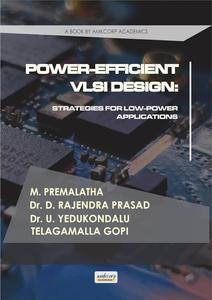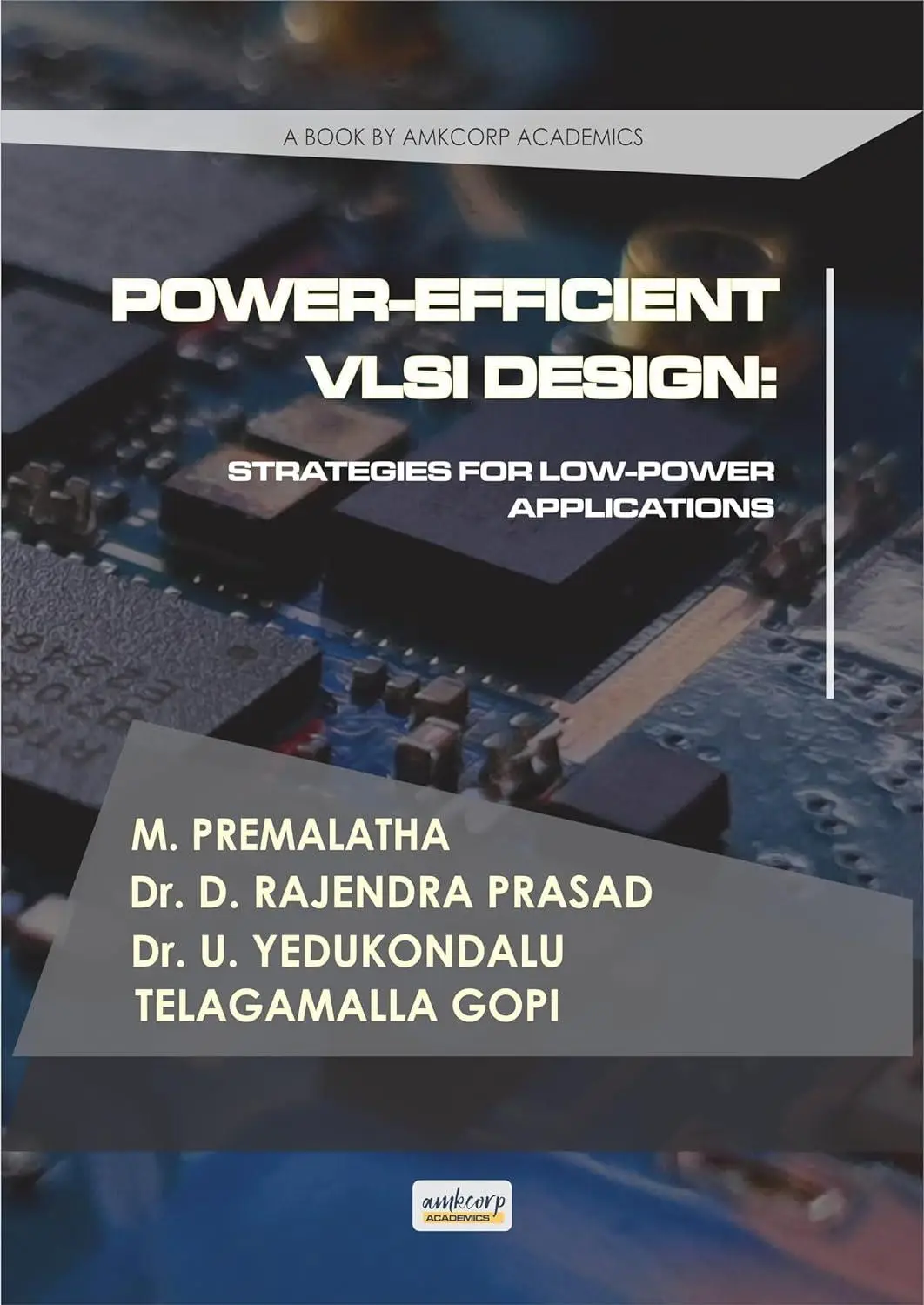POWER-EFFICIENT VLSI DESIGN: STRATEGIES FOR LOW-POWER APPLICATIONS
by M. PREMALATHA, Dr. D. RAJENDRA PRASAD, Dr. U. YEDUKONDALU
English | March 18, 2024 | ASIN: B0CW1B9P3F | 227 pages | PNG (.rar) | 39 Mb
by M. PREMALATHA, Dr. D. RAJENDRA PRASAD, Dr. U. YEDUKONDALU
English | March 18, 2024 | ASIN: B0CW1B9P3F | 227 pages | PNG (.rar) | 39 Mb
“Power-Efficient VLSI Design: Strategies for Low-Power Applications” is a comprehensive guide that explores the intricacies of designing energy-efficient integrated circuits, addressing the critical challenges and emerging opportunities in low-power VLSI design. This book serves as an indispensable resource for students, researchers, and industry professionals seeking to understand and implement power-efficient techniques in modern electronic systems.
Chapter 1: Introduction to Low-Power VLSI Design
- Provides an overview of low-power design principles and their significance in VLSI.
- Explores the historical perspective, challenges, and opportunities in power-efficient design.
- Discusses sources of power dissipation, including dynamic and static power consumption.
- Explores trade-offs and optimization techniques for reducing leakage power.
- Covers clock gating, voltage scaling, power gating, and other techniques for power optimization.
- Discusses dynamic voltage and frequency scaling (DVFS) and multiple threshold voltage design.
- Explores power optimization at different design levels, including RTL, gate, layout, and system levels.
- Discusses power-aware verification techniques for ensuring design reliability.
- Examines techniques such as pipelining, parallelism, and instruction-level parallelism for power reduction.
- Discusses power-efficient memory architectures and data path optimization techniques.
- Covers low-power arithmetic circuits, logic design techniques, and clocking schemes.
- Explores interconnect design and advanced flip-flop and latch designs for power efficiency.
- Provides an overview of challenges in analog and mixed-signal design and discusses low-power ADC and DAC design.
- Explores energy-efficient RF circuit design and sensor interface design.
- Discusses emerging technologies such as spintronics, tunnel FETs, neuromorphic computing, and quantum computing for low-power applications.
- Covers test challenges in low-power designs and techniques for power-aware testing.
- Discusses built-in self-test (BIST), test compression, fault diagnosis, and test pattern generation algorithms.
- Explores energy constraints in IoT and wearable devices and discusses power-efficient processors and communication interfaces.
- Covers energy harvesting techniques and battery management strategies.
- Presents case studies in low-power design for mobile devices, automotive electronics, data centers, medical implants, and green computing.
- Provides insights into future trends, challenges, and cross-disciplinary approaches for power optimization.
- Addresses ethical and environmental considerations in low-power VLSI design.



